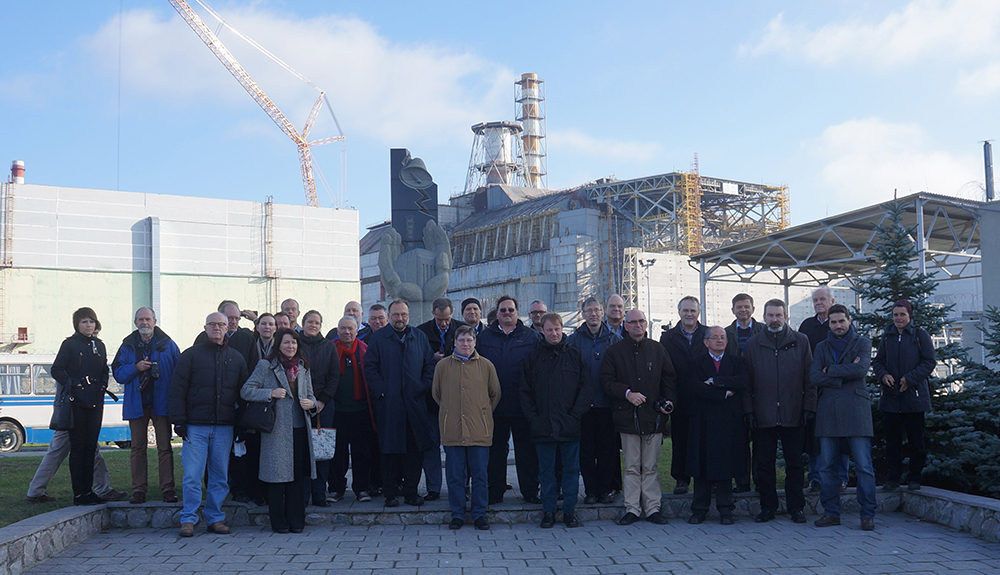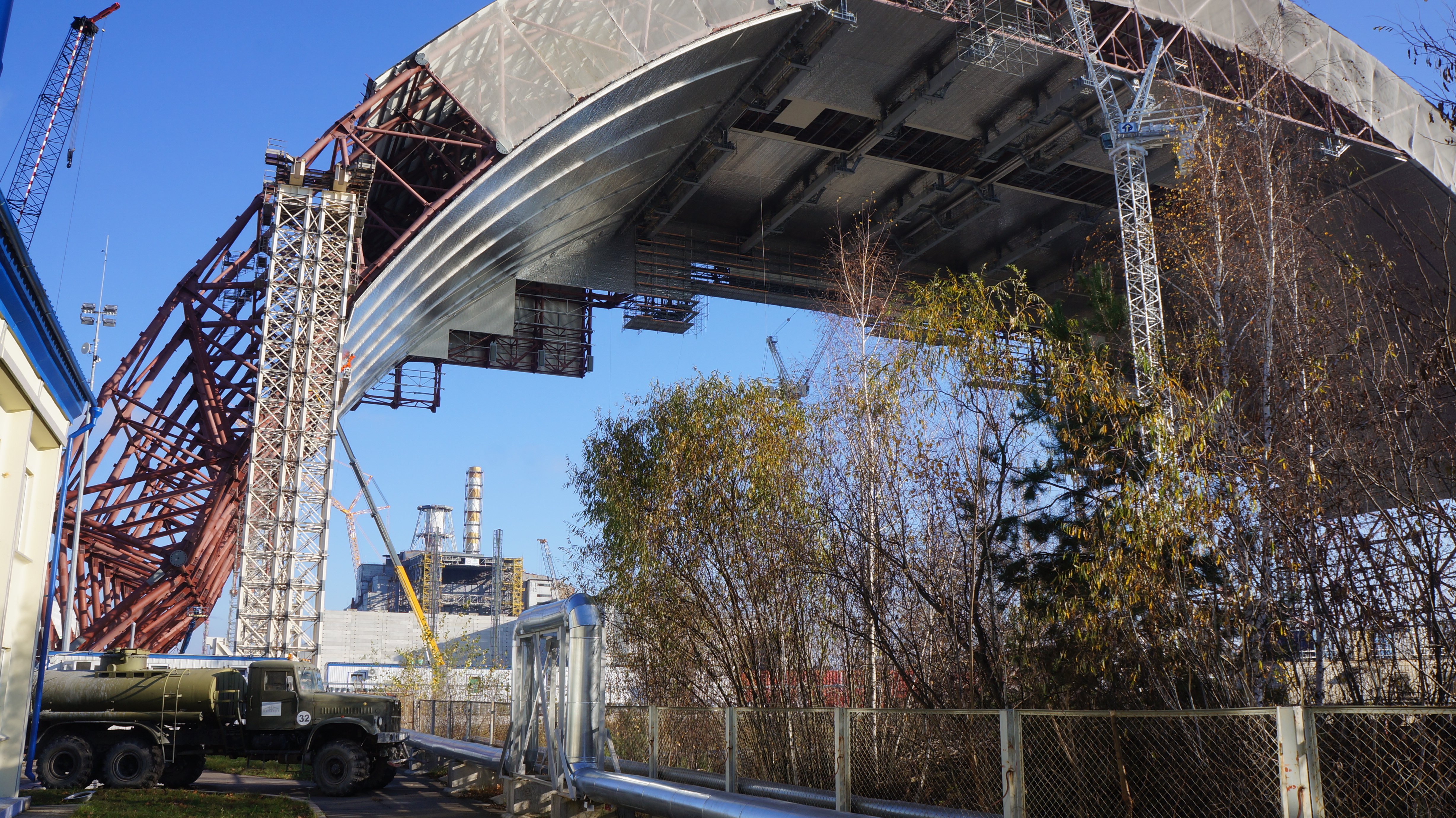
"For us regulators, it is important to be constantly aware of what can happen when safety is not given the highest priority," said Hans Wanner on the occasion of the one-day visit at Chernobyl.
Currently about 2,700 people are working on-site in Chernobyl. While liquidators are still working on securing the destroyed reactor 4, preparations are being made for the dismantling of the reactor units 1, 2 and 3. These reactors were not directly affected by the accident in 1986, and have all been taken out of service in the meantime.
In the last years new facilities for decontamination and conditioning of contaminated materials and their safe storage have been built.

However, the most spectacular change on the site, which is still hermetically sealed, is visible already from afar: Last October, the first part of the 108 meter high steel arch of the new, huge "safe confinement" was raised.
This shelter with a total weight of 31,000 tons of steel and concrete will by its completion in 2015 protect the destroyed unit 4 for the next 100 years. This new shelter will replace the old, partly damaged "sarcophagus", which was built immediately after the disaster in 1986 to contain the destroyed reactor.
The one-day WENRA visit to Chernobyl ended with a short visit to the abandoned, but completely undamaged,
town of Pripyat located only 5 kilometers from the accident site.
After returning from the exclusion zone WENRA Chairman Hans Wanner said that the visit to Chernobyl evoked similar feelings to a trip to Fukushima last year: “When driving through the abandoned cities and villages, it is evident that the people who lived here had to leave their homes in a hurry without being able to return. Such a situation is simply unacceptable - even more so since better precautions could have prevented these disasters. We have to learn our lessons and make sure that accidents with such catastrophic consequences will not happen again.”